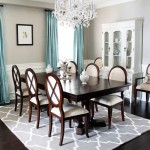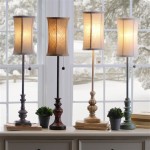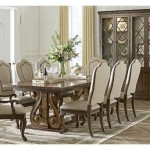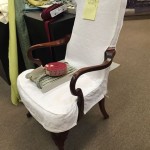Tilt Swivel Dining Room Chairs: A Comprehensive Guide
Tilt swivel dining room chairs introduce a dynamic element to the dining experience. These chairs, distinct from stationary models, offer both rotational movement and a tilting feature, facilitating enhanced comfort and flexibility for the user. Their design considers both ergonomic principles and aesthetic appeal, making them a popular choice for modern dining spaces. This discussion will delve into the key aspects of tilt swivel dining room chairs, exploring their functionality, construction, design considerations, and selection criteria.
Understanding the Functionality of Tilt Swivel Chairs
The core functionality of a tilt swivel dining room chair lies in its ability to rotate and tilt. The swivel mechanism allows the chair to turn a full 360 degrees, or within a predefined range, depending on the design. This rotational freedom permits the occupant to easily converse with others at the table, reach for items without straining, and adjust their seating position without the need to physically move the entire chair. The tilt mechanism, on the other hand, allows the chair to recline slightly. This feature is often controlled by a lever or knob located beneath the seat, enabling the user to adjust the angle of the chair's back and seat for optimal comfort, particularly during extended periods of sitting. The combination of these two features contributes significantly to the overall user experience, enhancing both convenience and comfort.
The swivel function is generally achieved through a bearing system located at the base of the seat. This system consists of ball bearings or other frictionless components that allow the seat to rotate smoothly and quietly. The quality of the bearing system directly affects the ease and longevity of the swivel function. A well-constructed bearing system will provide years of reliable service, while a poorly designed system may become stiff or noisy over time. The tilt function typically utilizes a spring mechanism or a gas cylinder to provide resistance and support. This mechanism allows the user to lean back comfortably without fear of the chair tipping over. The resistance can usually be adjusted to suit the user's weight and preference.
Furthermore, the interplay between tilt and swivel functionalities promotes better posture. The ability to subtly adjust seating position, combined with the gentle recline offered by the tilt feature, reduces pressure points and minimizes strain on the back. This is especially beneficial during long meals or social gatherings where individuals may spend extended periods seated.
Materials and Construction Considerations
The choice of materials and construction techniques significantly impacts the durability, comfort, and aesthetic appeal of tilt swivel dining room chairs. The frame material, typically wood or metal, provides the structural support for the chair. Hardwoods like oak, maple, and cherry are commonly used for wooden frames due to their strength and durability. Metal frames, often made of steel or aluminum, offer a sleek and modern aesthetic. Metal frames are often powder-coated to protect against rust and corrosion.
The upholstery also plays a crucial role in the overall comfort and appearance of the chair. Leather, fabric, and synthetic materials are all common choices for upholstery. Leather offers a luxurious look and feel, while fabric options provide a wider range of colors and textures. Synthetic materials, such as microfiber, are often chosen for their durability and stain resistance. The padding material used beneath the upholstery also contributes significantly to the comfort of the chair. High-density foam is a popular choice for padding due to its ability to provide support and maintain its shape over time.
The construction of the swivel and tilt mechanisms is another critical factor to consider. High-quality bearings and springs are essential for ensuring smooth and reliable operation. The mechanism should be securely attached to the frame and seat of the chair to prevent wobbling or instability. The weight capacity of the chair is also an important consideration, particularly for larger individuals. Chairs should be tested and rated for a specific weight capacity to ensure safety and durability.
The joinery methods used in the construction of wooden frames also impact the chair's longevity. Mortise and tenon joints, dovetail joints, and other robust joinery techniques are preferred over weaker methods like simple screws or nails. These stronger joints provide greater stability and prevent the chair from becoming loose or wobbly over time.
Design and Aesthetic Considerations
Tilt swivel dining room chairs are available in a wide range of styles to complement various dining room aesthetics. From traditional to contemporary, there are designs to suit every taste and décor. Traditional styles often feature ornate carvings, curved lines, and rich wood finishes. Contemporary styles tend to be more minimalist, with clean lines, sleek profiles, and modern materials like metal and glass.
The color and texture of the upholstery can also significantly impact the overall look and feel of the chair. Neutral colors like beige, gray, and white are versatile choices that can easily blend with a variety of décor schemes. Bold colors and patterns can add visual interest and personality to the dining room. The texture of the upholstery, such as smooth leather or textured fabric, can also contribute to the overall aesthetic.
The size and proportions of the chair should also be carefully considered in relation to the dining table and the overall dimensions of the room. Chairs that are too large can overwhelm a small dining room, while chairs that are too small may look out of place in a larger space. The height of the chair seat should also be appropriate for the height of the dining table to ensure comfortable dining. Ergonomic design principles should be considered to ensure the chair provides adequate lumbar support and promotes good posture.
Furthermore, the base of the chair can contribute to the overall aesthetic. Common base types include four-legged bases, pedestal bases, and cantilever bases. Four-legged bases provide stability and a traditional look. Pedestal bases offer a more modern and open feel, while cantilever bases provide a unique and contemporary aesthetic. The material and finish of the base should complement the other elements of the chair and the overall dining room décor.
Selecting the Right Tilt Swivel Dining Room Chairs
Choosing the appropriate tilt swivel dining room chairs requires careful consideration of several factors. First, evaluate the primary use of the dining room. If the dining room is frequently used for formal dinners or entertainment, chairs with a more formal and elegant design may be appropriate. If the dining room is primarily used for casual meals and family gatherings, chairs with a more relaxed and comfortable design may be preferred.
The size and shape of the dining table should also be considered when selecting chairs. The number of chairs that can comfortably fit around the table will depend on the size and shape of the table. The chairs should also be proportional to the size of the table. For example, a large, ornate dining table may require larger, more substantial chairs, while a smaller, simpler table may be better suited for smaller, more minimalist chairs.
The budget is another important factor to consider. Tilt swivel dining room chairs can range in price from relatively inexpensive to very expensive, depending on the materials, construction, and design. It is important to set a budget before beginning the search and to stick to it. However, it is also important to remember that investing in high-quality chairs can be a worthwhile investment in the long run, as they will likely last longer and provide greater comfort than cheaper options.
Finally, consider the existing décor of the dining room. The chairs should complement the existing décor, not clash with it. Consider the colors, textures, and styles of the other furniture and accessories in the room when selecting chairs. It is also a good idea to take measurements of the dining room and the dining table before beginning the search to ensure that the chairs will fit comfortably in the space. Prioritize personal comfort and ergonomic support to guarantee a satisfying and enjoyable dining experience for all users.

7 Piece 42x 54 72 Caster Dining Set Laminate Table Top Cocoa Chairs

7 Piece 42x 42 60 Caster Dining Set Laminate Table Top Graphite Chairs

Intercon Classic Oak Swivel Tilt Caster Chair Homemakers

5 Piece 42x 42 60 Caster Dining Set Laminate Table Top Stone Chairs

Caster Chair Company Arlington 5 Piece Dining Set 42x 42 60 Oak Wood Edge Laminate Table Top Caramel Swivel Tilt Chairs

Camile Dining Kitchen Swivel Tilt Caster Arm Chair Armchair Toast Tweed Pecan Ebay

Furnish Theory Caster Chair Company 5 Piece 42x 42 60 Pecan Castor Dining Set Laminate Table Top Toast Rolling Swivel Tilt Chairs Shopstyle

Aw Furniture Caster Chair With Arms Office Dinette Swivel Tilt Rolling Kitchen Room Durable Metal Base Walmart Com

7 Piece 42x 54 72 Caster Dining Set Laminate Table Top Wheat Chairs

Panama 6 Pc Swivel Tilt Caster Dining Set Model Pan011 In Honey Stain By Alexander And Sheriden








